-

‘देव’ भेटलेला विद्यार्थी
₹75.00एक कविता अनुभवण्याजोगी
गोष्ट सांगतो तुझ्या हिताची, भल्या मुला तू ध्यानी धरीं,
प्रथम प्रयत्नीं यश नच आले, फिरुनि एकदा यत्न करी ॥धृ॥
धीर धरुनी यत्न करीतां, बळ तुजला येईल बरे
भिऊ नको तू मुळी कधीही, जिंकशील तू हेच खरे
एक-दोनदा अपयश आले, यत्न कराया कचरु नको
यत्नामध्ये लाज नसे यश जरि स्पर्धेमध्ये नसे,
अशा प्रसंगी वागू कसे?
यत्न करी तू यत्न लाडक्या फिरुनि एकदा यत्न करी,
प्रथम प्रयत्नी यश नच आले, फिरुनि एकदा यत्न करी ॥1॥
जरी तुज वाटे अवघड अपुले काम मुला तू यत्न करी
काळ तुला देईल तयाचे इमान खासे धीर धरी
जे जे सारे शक्ती सारे कार्य कराया इतरजन
ते ते तुजला शक्य का नसे धीराने करिता यत्न?
नियम मात्र हा ध्यानी धरी, फिरुनि एकदा यत्न करी
प्रथम प्रयत्नी यश नच आले फिरफिरुनी तू यत्न करी,
यत्न करी तू यत्न लाडक्या फिरुनि एकदा यत्न करी ॥2॥ -
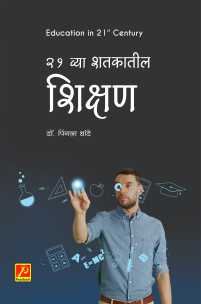
21 व्या शतकातील शिक्षण
₹425.0021 व्या शतकातील शिक्षण हे सर्जनशीलता, चिकित्सक विचार, सहयोग, सहकार्य आणि संप्रेषण/संवाद यावर भर देणारे असून माहिती संप्रेषण तंत्रज्ञानाच्या क्षेत्रात प्रचंड प्रगती झाल्यामुळे घरबसल्या विद्यार्थ्यांना खूप माहिती सहजगत्या उपलब्ध होते. विद्यार्थ्यांच्या सर्वांगीण विकास होण्यासाठी परिणामकारक अध्ययन करण्याची गरज आहे आणि यासाठी अनेक कार्यनीती शिक्षकांनी वापरल्या पाहिजेत. एखादा विशिष्ट किंवा क्लिष्ट, अवघड विषय विद्यार्थ्यांपर्यंत पोहोचविण्यासाठी शिक्षकाला विविध तंत्रे व कौशल्यांचे ज्ञान असावे. 21 व्या शतकातील कौशल्ये हि माहितीची देवाणघेवाण करण्यासाठी आणि योग्य मार्गाने वापरण्यावर अधिक भर देतात. शिक्षकाला सुविधादाता आणि अध्ययनासाठी प्रेरणा देणारा बनून विद्यार्थ्यांना कार्यतत्पर व सक्षम करावे. बदलत्या काळानुरुप शिक्षकाने आपली भूमिकाही बदलावी.
प्रस्तुत पुस्तकातील माहिती ही नेमका आशय, अचूक, सोप्या भाषेत, मुद्देसूदपणे मांडलेली असून तज्ज्ञ व्यक्तींचे ग्रंथ व लेखांचीही मदत घेतली आहे, जेणेकरून अद्ययावत ज्ञानाचा फायदा सर्वांना होईल.
21 Vya Shatkatil Shikshan
-
-24%

Contemporary Thoughts on Education
Original price was: ₹395.00.₹300.00Current price is: ₹300.00. -

-

-

-

English Language and Literature Teaching
₹175.00In the wake of globalization, English language and literature teaching has got unprecedented importance. We are witnessing great enthusiasm in learning and teaching of English around us in the recent times. Corporate world, BPO, national / international trade and business, banking, law, tourism, industries, etc. have opened up new avenues for smart learners. Technology assisted classroom set up has reduced the monotony of teaching and learning. Electronic media has opened up a treasure house of information both for the teacher and the learner. They are exposed to the first-hand sources. But technology demands to follow its own norms and rules to develop specific skills. Adoption of varying techno-based changes in teaching and learning has itself posed a new challenge for the traditional teacher and the learner. Overcrowded classrooms, lack of relevance of syllabi, scarcity of trained teachers, unduly changing evaluation policies; the pressure of demands for quality outcome from the stakeholders, increasing importance of smart communication skills are some of the challenges that are being faced by the teacher. There has always seemed a gap between the expectations of the curriculum designers and the learning outcome. It has widely been experienced that both the teacher and the student struggle to get expected result.
-

Gurukul Education for Holistic Growth
₹200.00The book is divided into six chapters. The first one explains his genuine intentions behind the writing of the book. The chapter is a rigorous analysis of the present ailments of Indian Society, namely, crime, indiscipline, national wastage, corruption, mismanagement, lack of civil responsibilities and the like. He believes that lack of moral and ethical education is at the root of the situation.
The second chapter explains the urgent need of reviving our ancient system of education, its basic emphasis on moral, ethical and cultural values we had in those days.
Chapter three is very significant in the sense it elaborates the author’s appeal to use ‘story-telling’ as the method of teaching at the early years of schooling. This small logical, philosophical thesis reminds us of the impact of Vishnu Sharma’s ‘ Panchatantra’, ‘Arabian Nights’, ‘Fables of Aesop’, stories of ‘Alibaba and forty thieves’, ‘Voyages of Sindbad’ and ‘Allauddin and his Magic Lamp’.The next chapter reveals the futility of our education system by comparing the discipline, civic values, moral conduct of foreign counties (with appropriate examples) with the anarchy, mismanagement, crime and irresponsible behavior of our people. The author urges to establish honesty, discipline and civic values he found in European and gulf countries, through proper education system in India.
The fifth chapter, a short one, cites the examples of good educational practices from South Korea and Japan.
The sixth and the last chapter carries the message of the writer to all the stake-holders of education, especially to the teachers working in Indian educational institutions. The prevailing education system in India is often described by some critics as ‘labour without delivery’. This chapter offers some very useful solutions to rectify the situation.
A sense of improving our environmental eco-system and need of living in harmony with Nature dominates through out this book.
-

-

New Trends in Education
₹275.00Education is mother of all branches. The Major objective of education is integrated development of personality. This integrated personality is shaped into classroom of school and colleges. It is very true fact teachers are real builder or Engineer’s of Modern India Society. So that it is very important to know about all educational branches new trends in education for today’s teachers, students and researchers. We believe that this conference is help to understand the importance of new trends in Education for build up tomorrow’s society and fulfilling the future social need and demands.
-

-
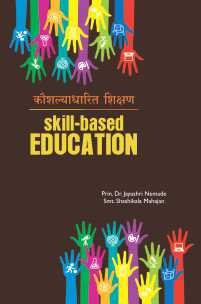
Skill-Based Education
₹275.00The main purpose of education is empowerment enabling one to earn one’s livelihood and live a life of dignity. Skill-based education, if taken and promoted seriously, can provide this empowerment to our huge, unemployed labour force and help India emerge as key contributor to a global skills based economy.It is true Our young generation needs to be skilled in order to get employment. It is very much important to get skills and only then we can think of a bright future of a country. Nowadays we usually face this problems that a person is knowledgeable but not skilled . We want our children to succeed in the social world–to learn how to cooperate, make friends, and negotiate conflicts. We want them to develop strong perspective-taking skills, and treat other people with fairness and compassion Social-emotional learning is a core component of effective education, increasing students’ academic achievement and behavioral health while teaching skills essential to success in all areas of life.
-

Teaching of English (Classroom Practices)
₹395.00A need to review and redesign the B.Ed. syllabus was felt as NCF-2005 expects the teacher to look at school education in a holistic manner. It advocates learner-centred learning rather than teacher-centred teaching. Teacher’s attitude, aptitude and motivation play an important role because the teacher needs to engage with the learning process of the learner. Teacher as a facilitator helps learners construct their knowledge. The teacher should be able to participate meaningfully to transact the syllabus and textbooks effectively along with teaching-learning materials. Therefore, the teacher should be well-versed not only with the subject content but also with the pedagogy of learning.
English is a foreign language for Indian students and to teach English to them is a tedious job. To make this language clear to the students, a sound knowledge of pedagogy is essential. In this book the latest trends and practices in teaching all the four English language skills, adequate coverage of the syllabus of many unviersities, suitability of classroom strategies, linguistic system, pedagogical aspects, aspects of teaching English, innovative learning resources, pedagogical analysis, creative form of English language, skills in English literary form, support services, social networking, pedagogical analysis, planning, evaluation, assessment and different types of lesson plans and learning plans extensive use of examples and lucid presentation – are some of the distinguished features of this book.
-

-
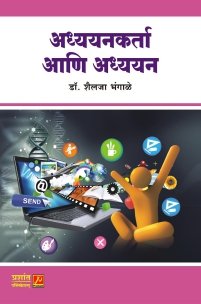
-
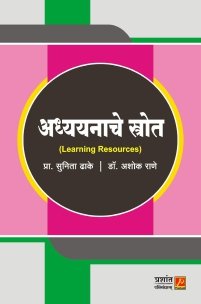
-
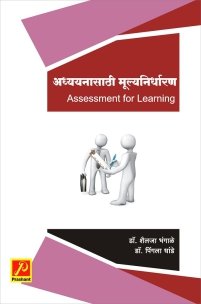
-

-
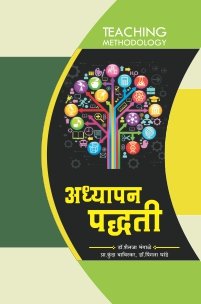
-

-

-

अध्यापनाच्या आधुनिक कार्यनीती
₹150.00शिक्षण क्षेत्रात कालानुरूप नवनवीन संकल्पना, विचार प्रवाह, नवप्रवर्तने, अध्यापन पद्धती, अध्ययन कार्यनीती विकसित होत आहेत. अध्ययनार्थी केंद्रबिंदू मानून नवीन तंत्रे, कार्यनीती, उपागम पद्धती, अध्ययन अध्यापन प्रक्रियेत वापरणे आवश्यक झाले आहे. पारंपारिक पद्धती, तंत्रे, कार्यनीती आधुनिक युगात कालबाह्य झाल्याचे दिसून येतात. शिक्षणाचा प्रसार खूप झाला आहे. सध्या शिक्षणाच्या गुणवत्तेकडे लक्ष देणे ही काळाची गरज बनली आहे. अध्ययन अध्यापन प्रक्रियेतील आव्हाने पेलण्यासाठी, शिक्षण क्षेत्रात नव्याने प्रवेश करू इच्छिणार्या व्यक्तींना नवीन प्रवाहांचा, प्रवर्तनाचा परिचय होणे आवश्यक आहे. सेवेत असणार्या शिक्षकांची अवस्था तर फारच बिकट झाली आहे. बिकट या अर्थाने की, बदलत्या गरजांनुसार पाठ्यपुस्तकांची निर्मिती झाली परंतु ही पाठ्यपुस्तके शिकविण्यासाठी नवीन पद्धती, प्रतिमाने विद्यार्थी केंद्रित कार्यनीतींचा पुरेसा परिचय नसल्याने किंबहुना त्यांचे उद्बोधन न झाल्याने अध्यापन करताना जुन्याच पद्धतींचा अवलंब केला जातो त्याचा परिणाम म्हणजे पूर्वनिर्धारित उद्दिष्टे साध्य होत नाहीत.
नॅकच्या निकषांमध्ये अध्ययन अध्यापनातील नाविन्यता या निकषासाठी 30 ते 35 टक्के भर दिलेला आहे. या सर्व बाबींचा विचार करून विद्यार्थ्यांच्या बोधात्मक, भावात्मक व क्रियात्मक या तीनही विकासात्मक क्षेत्रांचा विचार करून, शिक्षक विद्यार्थी व पालक यांना मार्गदर्शक ठरेल हा हेतू डोळ्यासमोर ठेवून या पुस्तकाची निर्मिती करण्याचा प्रयत्न लेखकांनी केल्याचे दिसून येते.
Adhyapnachya Aadhunik Karyaniti
-
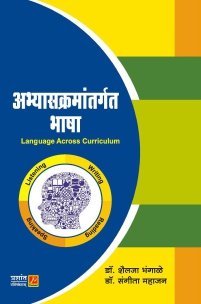
-
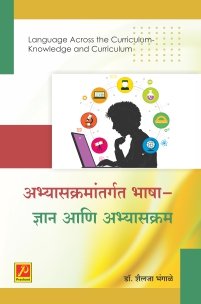
-
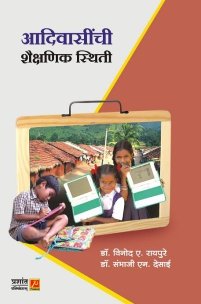
आदिवासींची शैक्षणिक स्थिती
₹125.00समाजकार्य अभ्यासक्रमात क्षेत्रकार्य हे समाजकार्य शिक्षणाचा आत्मा आहे असे म्हटल्यास अतिशयोक्ती होणार नाही. क्षेत्रकार्याचे पर्यवेक्षण करित असतांना आदिवासी भागातील, डोंगरात वास्तव्य असणार्या अनेक गावातील परिस्थितीचा अभ्यास करतांना तेथील मुलांचे शिक्षणाचे तसेच त्या भागात साक्षरतेचे प्रमाण कमी असल्याचे लक्षात आले. त्या भागातील शिक्षणाच्या अशा परिस्थितीस कारणीभूत वरवर काही कारणे लक्षात जरी आली तरी त्या संदर्भातील वास्तविक कारणे काय असावित याची उत्सुकता निर्माण झाल्यामुळे त्या विषयी या आदिवासी शिक्षणाच्या स्थितीबाबतचे अध्ययन करण्यात आले. आदिवासी विद्यार्थ्यांच्या शिक्षणाच्या स्थितीवर प्रकाश टाकण्याच्या दृष्टीने विद्यार्थ्यांना शिक्षण देणार्या शिक्षकाच्या माध्यमातून तसेच प्राथमिक शिक्षण घेणारे आदिवासी विद्यार्थी व आदिवासी आश्रमशाळांमधून शिक्षण घेवून विविध पदांवर कार्यरत असणार्या व्यष्टींच्या माध्यमातून तथ्य संकलीत करण्यात आले.
Aadivasinchi Shaikshanik Sthiti
-
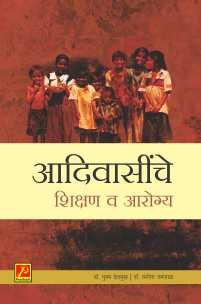
आदिवासींचे शिक्षण व आरोग्य
₹250.00भारताची एक ‘वैशिष्ट्यपूर्ण देश’ म्हणून जागतिक पातळीवर ओळख आहे ती विभिन्न पैलूतून. भारतात राहणारे विभिन्न जातीधर्माचे लोक हा त्यापैकीच महत्त्वपूर्ण असा पैलू होय. आदिवासी जमात हीसुद्धा प्रमुख जमात आहे. एकूण लोकसंख्येपैकी त्यांचे प्रमाण 8.5% असून डोंगर-दर्यात, जंगलात राहून आपली संस्कृती त्यांनी आजतागायत टिकवून ठेवलेली आहे. आदिवासी समूह हा आर्थिक, शैक्षणिक, राजकीय व सामाजिकदृष्ट्या अत्यंत मागासलेला असून त्यांच्या विभिन्न समस्यासुद्धा आजही कायम आहे. शासन स्तरावरून आदिवासी मुलांना शिक्षण प्रवाहात समाविष्ट करून घेण्याच्या दृष्टीने प्रयत्न चालूच आहे. सदरील पुस्तकात आश्रमशाळा व आदिवासी हा प्रमुख घटक असून आहार, आरोग्य, स्वास्थ्य, उपाययोजना इत्यादींचे सखोल अध्ययन शास्त्रशुद्धरित्या मुद्देसूदपणे मांडण्यात आले आहे. याचा वाचक, संशोधक तसेच अभ्यासूंना नक्कीच फायदा होईल.
Aadivasinche Shikshan V Aarogya
-

-

-
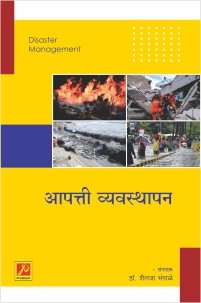
-

-
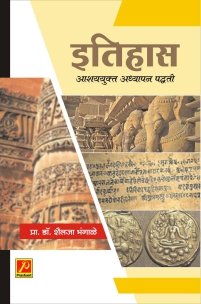
-
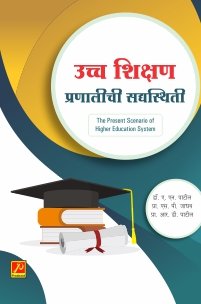
-
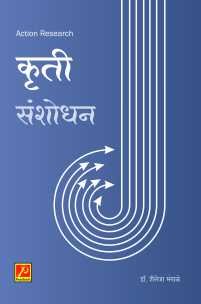
कृती संशोधन
₹250.00संशोधन मानव समाजाला विकासाच्या दिशेने घेवून जाणारे महत्वपूर्ण आणि सशक्त साधन आहे. उपयोगी संशोधन जीवनाच्या कोणत्या ना कोणत्या क्षेत्रात मानवाची प्रगती घडवते. कृती संशोधन म्हणजे आपल्या समस्या शास्त्रीय पद्धतीने स्वतः सोडविण्याची प्रक्रिया आहे. या संशोधनातून मिळालेल निष्कर्ष विशिष्ट क्षेत्रापुरतेच उपयुक्त ठरतात. कृती संशोधन हे शिक्षण प्रक्रियेचे सक्रीय व अविभाज्य अंग आहे. शिक्षण क्षेत्राची विविध अंगे आणि त्यांच्याशी संबंधित घटक हे कृती संशोधनाचे योग्य क्षेत्रे आहेत. कृती संशोधनाद्वारा काही अंतिम निष्कर्ष मिळाले म्हणजे संशोधन झाले असे होत नाही. कृती संशोधनातून मिळणार्या निष्कर्षांना पडताळून पाहिल्याशिवाय त्यांना पूर्णपणे विश्वसनीय आणि प्रमाण मानले जावू शकत नाही. यासाठी निष्कर्षांचे मूल्यमापन होणे गरजेचे असते.
भारतात अस्तित्वात असलेल्या विशेष परिस्थिती आणि मर्यादेबाबत मार्गदर्शन आणि समुपदेशनाच्या क्षेत्रात संशोधनाची गरज आहे. आपल्या विशेष गरजा, परिस्थिती आणि संस्कृतीच्या दृष्टीने मार्गदर्शन आणि समुपदेशन पाहिजे. विद्यार्थ्यांच्या गरजेनुसार मार्गदर्शन व समुपदेशन करणे, त्याची परिणामकारकता अभ्यासणे कृती संशोधनाद्वारे होवू शकते. शिक्षणाच्या संख्यात्मक सुधारणेसाठी शिक्षणाचे उद्दिष्ट आणि ही उद्दिष्ट्ये साध्य करण्यासाठी अभ्यासक्रम आणि कार्यक्रम संदर्भात संशोधन करणे आवश्यक आहे.
Kruti Sanshodhan
-
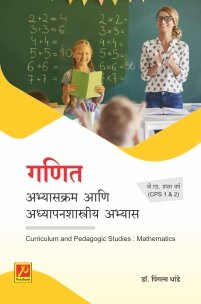
गणित : अभ्यासक्रम आणि अध्यापनशास्त्रीय अभ्यास (बी.एड. प्रथम वर्ष)
₹325.00Ganit – Abhyasakram Aani Adhyapanshastriya Abhyas (CPS 1 & 2)
-
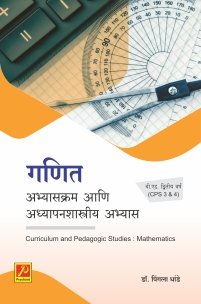
गणित अध्यापन पद्धती व आशयज्ञान (बी.एड.द्वितीय वर्ष)
₹425.00Ganit – Abhyasakram Aani Adhyapanshastriya Abhyas (B.Ed. Second Year (CPS 3 & 4))
-

गणित आशययुक्त अध्यापन पद्धती
₹350.00गणित अध्यापन पद्धतीची विविध पुस्तके आज रोजी उपलब्ध आहेत. परंतु येत्या काही वर्षात शिक्षण क्षेत्रात अनेक बदल झालेल्या बदलांच्या अनुषंगाने नवीन पद्धती, तंत्रे, प्रतिमाने, मूल्यमापनाच्या पद्धती, गणिती अध्ययनपूरक उपक्रम विकसित झाले. त्यात प्रामुख्याने सहकार्य अध्ययन पद्धती, ज्ञानरचनावाद, कृती आधारीत अध्ययन, मिश्रण अध्ययन, संकल्पना चित्रण, प्रभुत्व अध्ययन या पद्धती व प्रतिमानांचा समावेश आहे. तसेच सातत्यपूर्ण सर्वकष मूल्यमापन आणि अभ्यासक्रमातील नवीन प्रवाह यांचा सुद्धा समावेश केलेला आहे. या पुस्तकात गणिताचे स्वरुप, इतिहास, गणित अध्यापनाची उद्दिष्टे, गणित संरचना, आशययुक्त अध्यापन पद्धती संंंकल्पना व गरज, गणित अध्यापनाच्या पद्धती व उपागम, तंत्र, प्रतिमाने, गणित अध्यापनाचे नियोजन, मूल्यमापन, गणितातील अध्ययनपूरक कार्यक्रम, गणित पाठ्यपुस्तक अर्थ, उपयोग, निकष, गणित शिक्षक आणि भारतीय व पाश्चिमात्य गणितज्ञ या प्रकरणांचा समावेश केलेला आहे. पुस्तकातील प्रत्येक घटकाची मांडणी अधिकाधिक सोपी, सुलभ करण्याचा प्रयत्न केला आहे. हा ग्रंथ महाराष्ट्रातील सर्व विद्यापीठातील बी.एड. महाविद्यालयातील शिक्षक व प्रशिक्षणार्थी विद्यार्थी, प्राथमिक-माध्यमिक-उच्च माध्यमिक व महाविद्यालयीन शिक्षकांना निश्चितच उपयुक्त ठरेल.
Ganit Ashayayukta Adhyapan Paddhati
